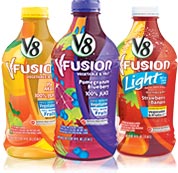Blackberry Backing Up?
Blackberry’s current TV campaign built around the Beatles song “All you need is love” is goofy. Pretty to watch, great editing, hum it and smile – but it really has no inherent brand building value. And in a slipping market for Research In Motion, manufacturer of the Blackberry, this is not good thing. Enter a print ad today on battery life. The headline reads “Imagine falling in love with a battery?” Does anyone hear the “beep, beep, beep” of a truck backing up here?
The Blackberry is a stud phone. My son in college has one. My friend’s high school daughter has one. As does his wife, for work. Now we don’t live in “the valley” and I know that the kids might like an iPhone as an accessory, but they are sold on the Blackberry’s ability to get them on the net and text with grace and ease. Why? Because it works. It delivers. Blackberry owns the word “work” — in its two dimensions. Get on mass transit and see who is using Blackberrys. Fill up a gym with kids – put the Blackberrys on one side, the iPhones on the other. What do you see?
Research will tell you love is strong, but it’s not reason to buy a Blackberry. This is a difficult, difficult category for brand planners. I don’t have the inside track, but I will tell you this: “Love” isn’t it. Beep, beep, beep. Peace!




